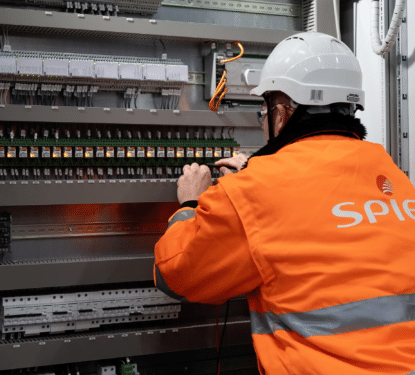The global market for the Building Internet of Things (BIoT) has been growing rapidly over the last decade with North America dominating the sector until recently. The rise of IoT adoption in buildings throughout the Asia-Pacific region in recent times is set to continue for at least the next five years. While the Asia-Pacific regions share of the global market is currently only marginally greater than that of North America, the incremental gains in the coming years driven by significantly different development metrics will see the region take a steadily more dominant position in the global BIoT landscape.
“The Asia-Pacific region overtook North America in terms of BIOT market revenues in 2015 and will retain its position as largest global market through to 2022,” states our latest report The Internet of Things in Smart Commercial Buildings 2018 to 2022. “It currently represents just over a third of global sales (34.3%) and faster overall growth in the region will help it expand this share to over 36% by 2022.”
This is not just a tale of two markets however, Europe also offers steady growth and while it is not expected to challenge the Asia-Pacific or North American regions for top-spot, Europe will remain a major player into the next decade. A “north – south” divide of sorts is present however, as the study finds that despite strong growth in Latin America, the Middle East, and Africa, there is little chance that these regions will be able to break into the big leagues in terms of global market share in the near future.
“The third major market, for European BIoT sales, is also shrinking in terms of global market share, from 24% in 2017 to 22.9%,” the report highlights. “The remaining two regions representing the emerging economies in Latin America, and nations in the Middle East, and Africa will both grow rapidly over the forecast period, but will still only represent a small portion of the overall market by 2022.”
The detailed report, released this month, provides a comprehensive overview of the BIoT market specifically. It assesses the fundamental dynamics of the market alongside the leading applications and opportunities, while also investigating the markets key drivers and barriers against the complex competitive and investment landscapes. Its regional market sizing and growth analysis section pioneers advanced and innovative metrics to estimate the evolution of BIoT adoption in a wide range of markets.
“Our forecasts for growth in particular regions are driven in part by several leading market indicators for the various regions of the world,” the report explains. “In addition to the analysis presented in other sections of this report, our forecasts have taken into account relevant demographic, economic and technology market metrics. The data for these metrics is taken from a wide variety of trusted sources, and help to illustrate the general overall market prospects and challenges for each respective region.”
Predictions go beyond the standard calculations of building stock and construction estimates by truly investigating various geographic markets’ ability to fully exploit the potential of the wider IoT and how that relates back to buildings.

The up-to-date analysis offers a unique and accurate view of the BIoT landscape today and how it will develop in the years to come. It analyzes regions not just in terms of a percentage of the global market but also divides markets in terms of a percentage of total device connections, giving a different and equally insightful exploration of world markets.
“The market picture when it comes to regional device connections differs slightly [from that of general global market], with the three major regions of Asia-Pacific, North America and Europe all sharing around 30% of the global market in 2017, the report suggests. “Once again however, growth in the Asia-Pacific region is expected to outpace the other two regions, with Asia Pacific device connections expected to represent over a third of overall connections (34.3%) by 2022.”
Overall, things are looking very positive for the BIoT landscape on a global level. Those markets seen as smaller players on the world stage actually offer some of the highest growth rates, while the incumbent regional majors maintain their continued steady maturation. The report offers compound annual growth rates (CAGR) for each region that paint a bright picture for the development of smart buildings through adoption of IoT devices by facilities around the world.
“We predict the strong double-digit growth in BIoT revenues in all regions over the forecast period, but the smaller regional markets will grow at the fastest rate, albeit from a much lower base. The Middle-East and Africa segment will demonstrate the fastest growth, with an expected 25.5% CAGR, followed by Latin America at 22.2% then Asia-Pacific at 20.9%,” the report estimates.
“We expect the European market to marginally outperform the North American market with around 18.2%. In North American market, where significant market growth has already occurred over the last three years, growth will still maintain a respectable 16.8% CAGR.”



